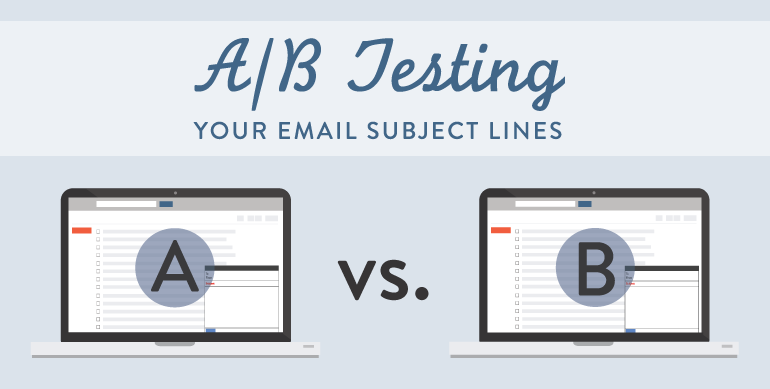

Are you about to send your next promotional email, but aren’t quite sure what subject line you should use to maximize your open-rate?
Perhaps you’re a lifestyle publication touting your latest issue, which contains a feature on a hot celebrity and an equally hot fall fashion spread. Your art department is sure the email’s subject line should mention the sizzling fall fashions, but your editorial team insists the celebrity interview is the topic that’ll get readers to open and read.
What do you do? You can bicker. You can flip a coin. You can pick a subject line totally unrelated to both topics and call it a day. Or you can perform a simple tactic known as A/B Testing. And, the A/B Testing best practices below can help make your decision obvious.
What Is A/B Testing?
Also called split testing, A/B testing splits your email audience into two different groups so you can test two different email subject lines. Group A may receive a subject line that highlights the issue’s celebrity interview while Group B receives a subject line about the fall fashion spread.
Once emails are sent out to the two groups, you can review the open rates of each batch to see which subject line was more effective with your audience.
What Can A/B Testing Do For You?
 Using A/B testing on a sample of your mailing list before you send out your email to the entire crowd can pinpoint the most effective subject line to use. A/B testing takes away the guesswork and gives you solid insight based on actual results.
Using A/B testing on a sample of your mailing list before you send out your email to the entire crowd can pinpoint the most effective subject line to use. A/B testing takes away the guesswork and gives you solid insight based on actual results.
While the immediate results you’re looking for may be email open rates, opening an email can be the first step toward more action. An open can lead to a click-through, which leads to a new subscription, sharing of the issue with social networks, and increased awareness and sales of your publication.
How Do You Do A/B Testing?
A/B testing can lead to accurate and meaningful results by keeping these tips in mind.
- Choose a large enough sample. Picking the ideal sample can be tricky. You want a large enough sample to produce strong results, but you don’t want a sample that’s too large and therefore exposes too many recipients to a subject line that may perform poorly. And, you don’t want your testing sample to be too small because this will result in statistically meaningless results. Exact Target suggests that, if your list is over 50,000 recipients, send Subject Line A to 5% of your list, send Subject Line B to 5% of your list, and then send the better performing subject line to the remaining 90% of your list. For lists under 50,000, use a 10% – 10% – 80% split.
- Change only one variable at a time. While you can use A/B testing to compare many portions of your email campaign, you should keep the comparison to one variable at a time. That means A/B testing for your email subject line shouldn’t include any variation in the email body, the “from” field or the general time of day the two batches are sent.
Your next and final steps involve sending the emails and then reviewing the results. Make sure you give the test enough time to work, with a timeframe that matches how long it usually takes people to open your emails. Once you see which subject line performs better, you can use it for the emails you send to the remainder of your list.
A/B testing is a valuable tool you can use on many marketing efforts. It produces straightforward results, is simple to use and may even prevent arguments between your departments.
